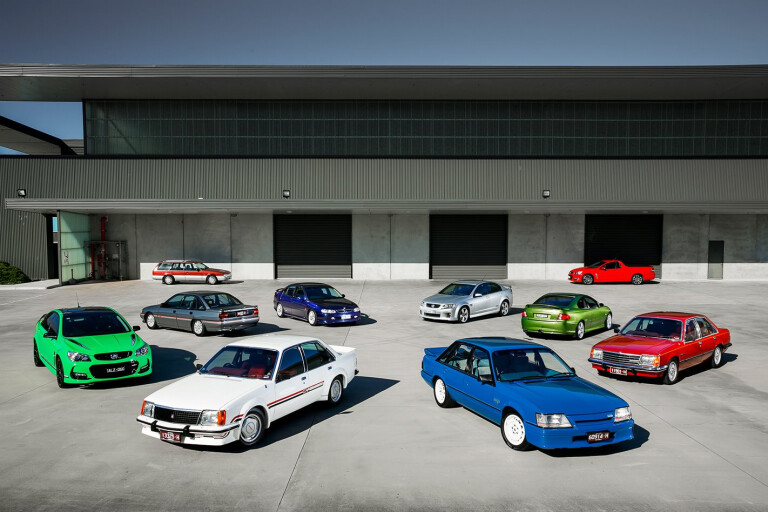
You can thank Ted Bullpitt (ask your dad) for the fact that so many Australians think Kingswood when the topic of Holden comes around.
And while it’s true that the mighty Kingy became a central theme in Aussie life, (along with ‘leave the money on the fridge’) in fact, the Holden Commodore has had a much, much longer run.
UPDATE DEC 2019: Since this story was published, much has happened. The VFII Commodore gave way to the ZB Commodore, a rebadged Opel Insignia, and sales declined significantly. On December 10th 2019, Holden announced the Commodore would be dropped from its lineup completely, along with the Astra, leaving the brand selling only SUVs and light commercial vehicles.
Even if you include the WB Commercial range (the Kingswood sedan was gone by the end of 1980) which lasted until 1985, you’re looking at a 17-year run for the Kingswood badge. But the Commodore? Thirty-nine years. Yep, almost four decades and, in that time, there have been some glorious performance versions.
Here are the 10 we reckon represent the genre most completely and faithfully. Back in the late 1980s, the Australian car industry was going through a period of change. Even Ford was in on the act, offering up a Falcon dubbed rather optimistically ESP, which stood for European Sports Pack.
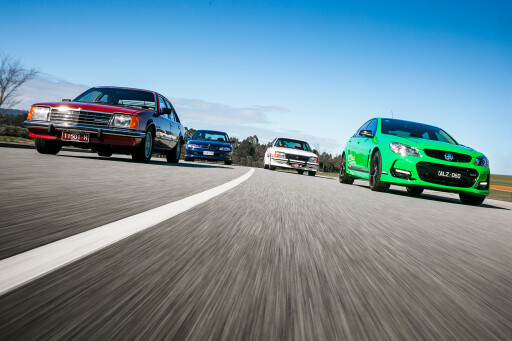 Never mind that a Falcon with alloys and a pair of driving lights was about as continental as Paris Disneyland. Basically, if it was European in the late-’70s, early-80s, it was good. Meanwhile, an oil crisis had wised Holden up to the fact that efficiency was going to become increasingly important, and a move from the full-sized Kingswood to the more compact Commodore was a big part of that.
Never mind that a Falcon with alloys and a pair of driving lights was about as continental as Paris Disneyland. Basically, if it was European in the late-’70s, early-80s, it was good. Meanwhile, an oil crisis had wised Holden up to the fact that efficiency was going to become increasingly important, and a move from the full-sized Kingswood to the more compact Commodore was a big part of that.
But the Commodore was on the agenda for another important reason: the World Car was the buzz in the global industry. Why design and engineer a completely different car for different markets? Surely, what works in the US or Germany will work in Australia?
Er, no, as it turned out, and Holden had to do a whole bunch of re-engineering of the basic Opel platform and bodyshell before it arrived at a car that would cope with Australian conditions. And there was another criteria that needed to be met – it had to be able to accommodate the V8 engine option if it had any chance of being successful Down Under.
So, yes, the original VB Commodore was a world car, but one that had huge local input. Which just makes it seem a tiny bit ironic that it’s globalisation (among a plethora of other factors) that has put the final nail in the coffin of local car-making – which is still a difficult notion to digest.
But none of that changes the fact that when the VB Commodore burst on to the scene in 1978, we all stood around with our mouths open. Yes it still had a live-rear axle and yes it still used old push-rod engines.
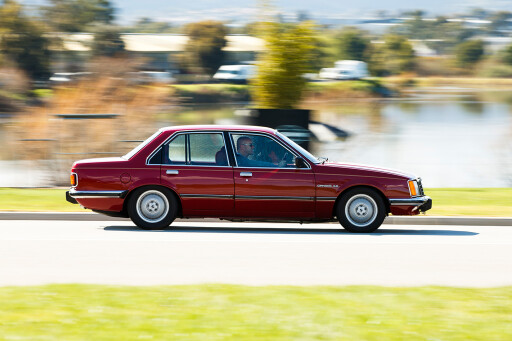 However, look a bit more closely. It had rack-and-pinion steering (something Ford wouldn’t have for another decade), it was compact, yet still had a good footprint, it was light enough to feel frisky when fitted with engines designed for a heavier car and it handled and cornered like no other Australian car before it.
However, look a bit more closely. It had rack-and-pinion steering (something Ford wouldn’t have for another decade), it was compact, yet still had a good footprint, it was light enough to feel frisky when fitted with engines designed for a heavier car and it handled and cornered like no other Australian car before it.
Oh, and there was this version called the SL/E. And that was just a spaceship. Alloy wheels, lots of fuzzy, gaudy velour trim, chrome strips everywhere and, get a load of this Shazza, windscreen wipers on the headlights. And while a lot of SL/Es were six-cylinder powered, an awful lot of buyers took the plunge and specced either the 4.2-litre or 5.0-litre V8 engine.
Of those two, the 5.0-litre was the big hitter and it immediately became the performance Commodore of the time. Apparently, a handful (like 100 or so) of the 5.0-litre L/Es were optioned with a four-speed manual, but the vast majority were, like this car, autos.
If you’ve grown up with post-VT Commodores, you simply would not believe just how light a VB feels to drive. They weigh in at close enough to 1380kg (with that big lump of cast iron under the lid), but even with the typically dodgy power-steering of the day, they are like a scalpel compared with the later stuff.
Well, a sharp knife, anyway. And with the old 308 on board, even allowing for a soft tune and a four-barrel carburettor rather than injection, they were a quick thing in the day. Quicker than most, anyway.
 Oh sure, a base-model with the 5.0-litre option and a manual box was a bit faster (such a thing was a pretty handy highway patrol car in the day), but it was the SL/E that combined the muscle with the degree of plush that made for special times.
Oh sure, a base-model with the 5.0-litre option and a manual box was a bit faster (such a thing was a pretty handy highway patrol car in the day), but it was the SL/E that combined the muscle with the degree of plush that made for special times.
The SL/E crossed a few borders, too, and blurred a fair few lines. On the one hand it wasn’t out of place in the driveway of the local bank manager, but it could also hold its own as a modern muscle car. You look at a VB SL/E now, of course, and they seem almost impossibly small.
And it’s true; they are. In fact, it’s no accident that just 10 years later, Holden went back to a full-sized, full-width format for the VN Commodore. And while a VB won’t stay with an LS1-powered Commo, an SL/E still has enough of that lovely low down, 308 urge to be a thoroughly convincing drive.
Holden’s stillborn 350ci VB Commodore
And though they look small, they also look undeniably ‘right’. The proportions work and the shovel-nose and thin roof pillars have aged very gracefully over the years. They still drive beaut, too, and that lightness and agility is what stamps them as most different from later Commodores.
The automatic tranny makes them manageable, the big glasshouse gives great vision out and the torque of the 308 puts a real spring in the VB’s step. Calling them a completely modern-feeling drive is probably pushing it, but they still represent a huge jump over anything with a Holden badge that went before it.
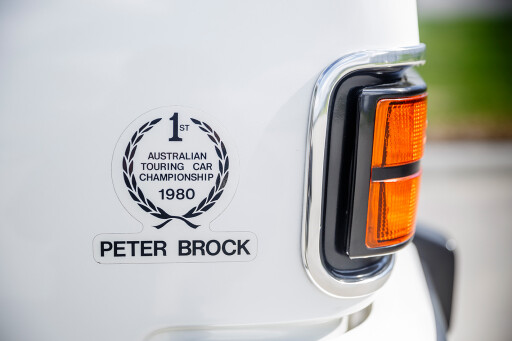 It seems, these days, a fairly natural progression that the next model, the VC, would form the basis for Peter Brock’s newly minted road-car operation.
It seems, these days, a fairly natural progression that the next model, the VC, would form the basis for Peter Brock’s newly minted road-car operation.
Fact is, the birth of HDT cars was a huge leap for both Brock, who was in those days, after all, known only as a race driver, and for Holden, which not only helped the new venture in many ways, but also agreed to sell the – largely untried – product through its own dealer network.
It needn’t have worried, because the car that eventuated, the VC HDT was, and still is, a legendary piece of equipment. Just as well, because the road car business was what funded the race team.
Understated it is not, and those huge wheel-arch flares, mad boot spoiler and those too-cool Irmscher alloys still make us old blokes go a bit wonky in the guts. By then, of course, touring car racing in this country was no longer conducted on an improved-production basis, and we’d moved on to the rather more accommodating Group C rules.
Nevertheless, if you wanted to race a 5.0-litre Commodore, you still had to sell one to the punters. Suddenly, the Brock connection made all sorts of sense (as if it hadn’t before). So the HDT Commodore became a very broad blueprint for what raced at Bathurst under the HDT banner, an operation now owned by Brock.
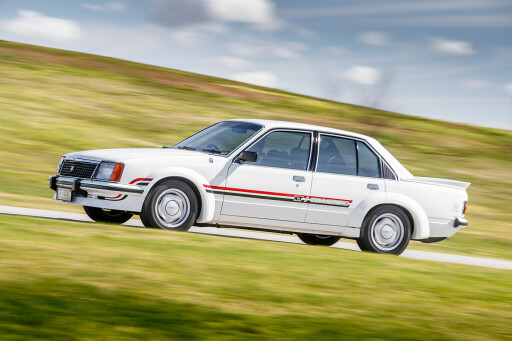 What’s perhaps most surprising about the VC HDT’s body kit is that it wasn’t required to be homologated on the road-car version; the Group C rules allowed for that sort of stuff to be added to the racecars only. But that just goes to prove how committed ‘Peter Perfect’ was to giving his new customers a real slice of Bathurst for the ’burbs.
What’s perhaps most surprising about the VC HDT’s body kit is that it wasn’t required to be homologated on the road-car version; the Group C rules allowed for that sort of stuff to be added to the racecars only. But that just goes to prove how committed ‘Peter Perfect’ was to giving his new customers a real slice of Bathurst for the ’burbs.
And it’s that mad, wilful mood that pervades the car, from its velour roof lining to its trademark red, white and blue stripes. It’s no shrinking violet. With Brock’s attention, the 308 was tweaked up to produce about 160kW, but the exact output of each individual car is debateable.
Essentially, if you wanted it and could afford it, there was a pretty good chance Brocky could be persuaded to oblige you. It sounds a bit laissez faire these days, but back then cherry-picking a car’s spec was still happening even at official Holden dealer level.
The bulk of the 500 VC HDTs though, were fitted with a fiddled version of the Quadrajet four-barrel carb (including a cold-air intake) with ported heads and a port-matched intake manifold. Based on the SL/E, they therefore had the full bordello crushed velour trim and they were painted either white, red or black.
 And they all got the shouty red interior – which is rather hard to miss. Quicker than the VB SL/E, a VC HDT can feel a bit raw at times with plenty of noise and a ride that could be a bit harsh. By far the most antiquated aspect, however, is the clunky old four-speed manual and heavy clutch; it’s easy to see why quite a few buyers chose the auto option.
And they all got the shouty red interior – which is rather hard to miss. Quicker than the VB SL/E, a VC HDT can feel a bit raw at times with plenty of noise and a ride that could be a bit harsh. By far the most antiquated aspect, however, is the clunky old four-speed manual and heavy clutch; it’s easy to see why quite a few buyers chose the auto option.
Especially since the auto for the HDT was the TH350 rather than the old Trimatic that joined the flywheel and diff in the vast majority of contemporary Holdens. It seems a bit odd in these days of six and seven-speed manuals and 10-speed autos, that the most famous of all Brock cars, the Blue Meanie VK Group A SS, was also still a four-speed car.
I mean, this was 1985, right? Then again, the world of HDT cars was clearly in a state of flux, judging by the variations on the Blue Meanie theme.
How that gels with the notion that the VK SS was a homologation car for the newly minted Group A rules (which came into effect in Australia in 1985) poses more questions than it answers, but beyond the car’s reputation (which is rock solid) the HDT VK Group A is a bit of an enigma wrapped in a riddle.
That starts with whether the thing is a Holden or strictly a HDT product. There’s a single Holden badge on the bootlid, but also a HDT build-plate. The slightly more pedestrian, basic VK SS is rumoured to have a mixture of cars with and without the HDT build plate under the bonnet, so who the hell knows.
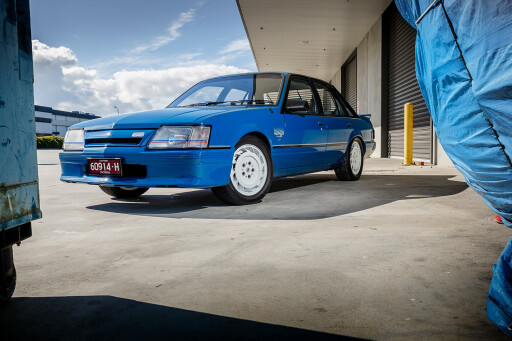 Now, those early VK SSs used the Holden V8 with its original, 308 cubic-inch capacity. But by the time the Group A SS turned up, that had been reduced to 304 cubes, or slightly less than 5.0-litres to give the thing a fighting chance under the international Group A capacity rules.
Now, those early VK SSs used the Holden V8 with its original, 308 cubic-inch capacity. But by the time the Group A SS turned up, that had been reduced to 304 cubes, or slightly less than 5.0-litres to give the thing a fighting chance under the international Group A capacity rules.
A slightly destroked crank took it down to 4987cc. As well as the short-stroke bottom end, the A9L (as the Group A engine code was known) also got roller rockers, a lumpier cam, a cold-air intake and a few tweaks to the block to relieve stress areas and prevent cracks and failures under the blowtorch of touring car racing.
Brock claimed 196kW for the thing which, given the single four-barrel carby, was really something. Especially back then. HDT’s attention to detail was starting to shine through, too, and as befitting its homologation-car status, the Group A got 16 x 7-inch alloys, a body kit, Scheel front seats as well as a Momo tiller and gear knob.
But light weight was also critical for a racecar platform, so the VK got a very simple interior with just two speakers. However, here’s where it gets weird again: If you had an extra $2850, you could order your Group A with the T5 five-speed manual as in the car featured here, which also came from the dealership with four – count ’em – speakers for the radio-cassette.
You can’t even sit inside a VK Group A without being reminded that this is a homologation car. And that goes double when you drive it. It’s raw. The camshaft is a fair old size and it feels like there’s very little to insulate you from what the various oily bits are doing. Wonderful in other words.
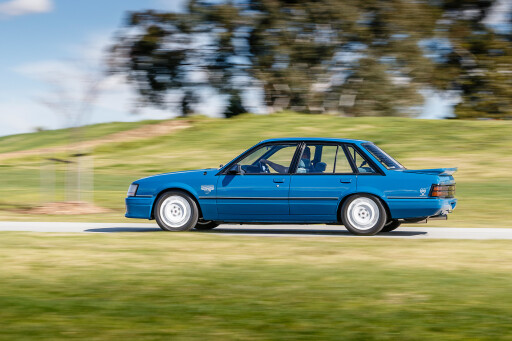 The gearshift in four-speed versions was a bit of an animal and the clutch was more or less a fuse, so care was needed when swapping cogs. But once it was up on that cam and howling along, the Group A was a real hard act to follow in terms of tactility and brute force. And we don’t need to tell you how tough it looks... Blue Meanie indeed.
The gearshift in four-speed versions was a bit of an animal and the clutch was more or less a fuse, so care was needed when swapping cogs. But once it was up on that cam and howling along, the Group A was a real hard act to follow in terms of tactility and brute force. And we don’t need to tell you how tough it looks... Blue Meanie indeed.
By the time the VL Commodore had come along, Holden had learned a fair bit about the unleaded petrol that became mandatory at the same time. Chief among those things was that the old six-cylinder Holden motors were never going to work on the new brew.
So, Holden went shopping, and that led to Nissan in Japan and the injected 3.0-litre RB30 straight-six. Compared with the old red/blue/black Holden sixes, the Nissan mill was a true revelation with loads more power, decent torque for it size and a smoothness and refinement that the old Holden sixes could never have matched.
Hell, it even ushered in a four-speed automatic option. Even more interesting was a close relation of the RB30 called the RB30ET, which ran a single turbo and bumped power from the stock VL Commodore’s 114kW to 150kW. Okay, so an N/A, two-litre Toyota 86 has about the same output these days, but that turbo torque was the name of the game.
I can clearly remember looking at a Calder Park time-slip from the press launch of the VL Turbo which read 15.2. Again, a Toyota 86 can match that, but in 1986 this was the new benchmark Aussie performance car.
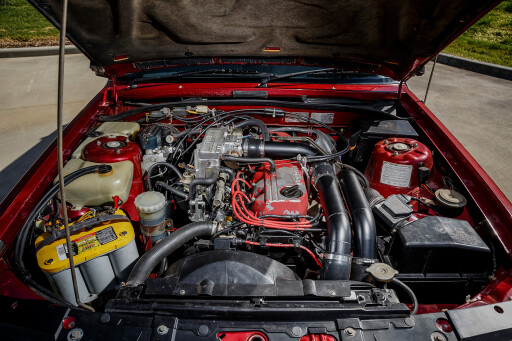 That was especially true when compared with the VL V8 which arrived a few months later, still staggering from the smackdown administered by ULP and gasping along with just 122kW. Interestingly, Holden decided to offer the turbo engine option on everything from the base-model Commodore Executive to the Calais.
That was especially true when compared with the VL V8 which arrived a few months later, still staggering from the smackdown administered by ULP and gasping along with just 122kW. Interestingly, Holden decided to offer the turbo engine option on everything from the base-model Commodore Executive to the Calais.
You also had to take the FE2 suspension package and the 15-inch wheels, required to clear the V8-spec brakes. But with the 15-inch version of the plastic wheel-trims, a white Exec Turbo was the ultimate mid-80s Q-ship.
Brock was in on the turbo thing, too, and as a 22-year-old staffer on Car Australia (which morphed into MOTOR in the 1990s) I got the job one day of picking up a brand-spanking VL Turbo with a few Brock tweaks.
Holden VH Group 3 vs Peter Brock’s VH 05
Turns out the car was actually Brock’s own company car and it was a pale, metallic green jigger with a manual box and those gorgeous Momo five-spoke alloys. It also turns out that another journo from one of the Melbourne newspapers had borrowed the sister car the week before, took it for a spin and forgot that the tranny had an over-drive.
Apparently, the turbo-six didn’t much like being held flat in third gear and threw a leg out of bed. Exactly what Brock thought of spotty little me turning up to borrow his own car a week later is not exactly known. However, he was an absolute gentleman about it.

It made about 150 in V8 form, but only around 50 with the turbo motor. And this is one of them. It’s about as understated as a 15-second car could be in 1988, and it stands as a great sleeper even now.
ULP was clearly a thorn in Holden’s side in the mid-to-late 80s, but eventually it settled on a solution: The bread-and-butter Commodores would get the 3.8-litre Buick-derived V6 engine for the new VN Commodore, while the in-house brains trust at Fishermens Bend would sort something out with the V8. Did it ever.
The bottom end stayed much the same including the 304-inch capacity, but the top end stuff was all new. That included the cylinder heads which now featured an inlet-exhaust-inlet-exhaust port layout and electronic fuel-injection was adapted. And the old girl loved it.
Suddenly, power was up to 165kW, torque was a meaningful 385Nm and if the five-speed manual didn’t suit you, there was now a four-speed auto in the form of the TH700.
 It’s difficult to describe the impact this engine had on the Aussie motoring psyche, but bear in mind that Ford didn’t even have a V8 option in its then-new EA Falcon, and it’s this fact, probably as much as any other, that led Holden to market domination over the Blue Oval in the years that followed.
It’s difficult to describe the impact this engine had on the Aussie motoring psyche, but bear in mind that Ford didn’t even have a V8 option in its then-new EA Falcon, and it’s this fact, probably as much as any other, that led Holden to market domination over the Blue Oval in the years that followed.
Certainly, for lovers of local performance, there was only one showroom worth visiting. While Holden Special Vehicles produced the VN Group A SS to homologate its touring cars, that model was never as highly regarded (until now) as the Brock homologation specials that went before it.
Or the Walkinshaw Commodore that immediately preceded it, for that matter, Even with its twin-throttle body version of the 5.0-litre and 210kW, the VN Group A S looked fat, rode harshly and the six-speed manual was clunky and recalcitrant. It was also $70,000 by the time you put 12 months rego on it and paid the stamp duty.
Which meant the hero car of the hour was the VN SS, an Executive-based bomber with the 165kW V8, a choice of auto or manual, FE2 suspension and 15-inch alloys of a particularly ordinary design.
Forget that the VN still ran the VL’s skinny front track (which explains the pigeon-toed look) and that it was still a live-axle car (the IRS wouldn’t arrive until the next SS, the VP) because the VN SS was it-and-a-bit back in the late-90s.
 Suddenly, you had a car that could sink a quarter-mile in a high-14 (on the right day) and cart you and your family across the state in a single day. It could also average about 10L/100km doing it and it was just ‘right’.
Suddenly, you had a car that could sink a quarter-mile in a high-14 (on the right day) and cart you and your family across the state in a single day. It could also average about 10L/100km doing it and it was just ‘right’.
The look was a bit dumpy back then, but these days, it seems to have come into its own and the whole concept is being applauded for its purity and simplicity. Okay, so the interior design owed more to an egg-and-spoon race than the space race, and the crook plastics meant that any VN was home to plenty of fizzes and buzzes early on.
And, yes, the build quality was off the pace and the bodyshell was a bit flexy, and, and, and – we could go on. But, ultimately, with that engine, the VN SS rocked. Still does. The VN SS set the model on a particularly successful course for the next few years with sophistication increasing along the way.
So it was natural that the whole SS thing would be carried into the all-new VT Commodore of 1997. But by then, even Holden had to admit that the old 5.0-litre engine was pretty much getting towards its use-by date and the Chevrolet-sourced LS1 was waiting in the wings for the Series II VT, which lobbed in 1999.
But when it did land, the LS1 was a slight disappointment in a couple of areas. It was lazy off the bottom end and it had quality issues. Serious ones.
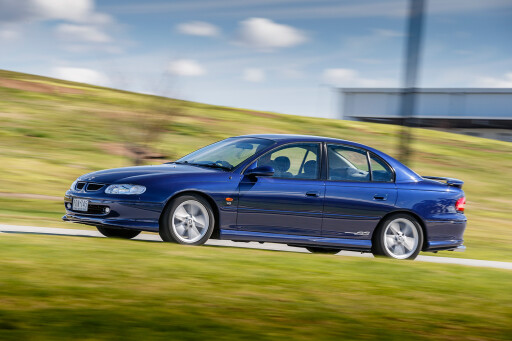 Obviously, after all the engineering involved to get the LS1 into a Commodore bodyshell, Holden couldn’t turn the clock back and resurrect the 304, but we can, and that’s why the VT SS is a Series I car complete with the last of the mighty Iron Lions.
Obviously, after all the engineering involved to get the LS1 into a Commodore bodyshell, Holden couldn’t turn the clock back and resurrect the 304, but we can, and that’s why the VT SS is a Series I car complete with the last of the mighty Iron Lions.
And even though Holden knew it was going to the Chev V8 in just a handful of months, it also knew that the Holden V8 would need a smarten up if it was to carry the VT SS through. And that’s the other reason this car is here – in its final form, the 5.0-litre Holden V8 was enjoying its finest hour.
Still unchanged in capacity terms, the engine was spruced up with sequential fuel-injection for efficiency and a roller camshaft for better performance. The end result was 179kW, but a popular option was the high-performance upgrade which took power to 195kW and torque to 430Nm.
That was still a little short of the Gen III’s 446Nm, but that was produced at 4400rpm while the Holden V8’s torque peak was a more urban-friendly 3600rpm.
Ultimately, it was the extra kerb mass of the bigger, wider, more substantial VT body that did the damage, and as Holden improved the LS1, the performance gap between each new SS and the VT Series I SS grew ever larger.
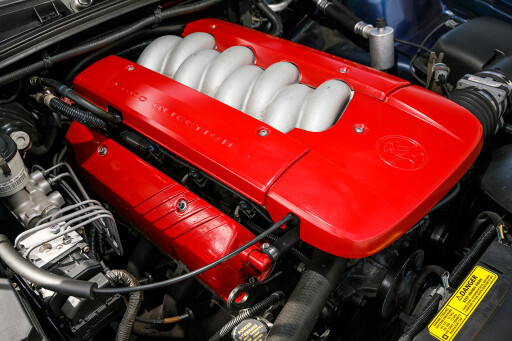 While it’s difficult (impossible, actually) to argue with the fuel efficiency and outright power of the LS1, there are those (yours truly included) who believe that the newer engine cannot hold a candle to the old Iron Lion in terms of personality and character.
While it’s difficult (impossible, actually) to argue with the fuel efficiency and outright power of the LS1, there are those (yours truly included) who believe that the newer engine cannot hold a candle to the old Iron Lion in terms of personality and character.
Thanks to the Chev’s odd firing order, the old Holden motor sounds better, too. And I own one of each, so I should know. Actually, the next chapter in this story is also a bit personal for me. See the Hothouse Green CV8 Monaro in the pics? Yep, that’s my actual car.
Paid for with my own money. It’s not that the VX Commodore was much more than a very mild facelift over the VT, but the reason this car is here is all about that body. And what a body. You could argue that Australian car-makers have not yet made a full-sized two-door that doesn’t look the absolute business.
From the first two-door Falcon, to the HQ and XA hard-tops, right up to this car – it seems to be something we’re pretty good at getting right when we do them.
You all know the story by now: After-hours project by a handful of dedicated Holden designers and engineers; winds up on Sydney Motor Show stand in 1998; Holden caves in to buyer pressure and by 2001 it’s in production complete with Monaro badges.
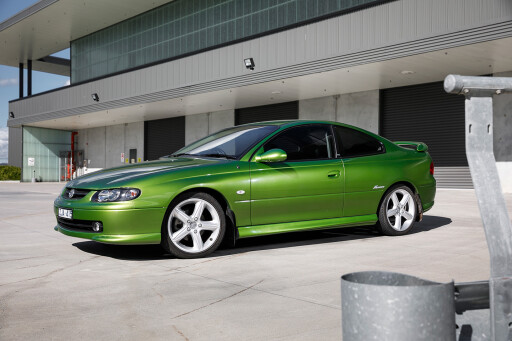 What you mightn’t know is that the CV8 Monaro was also a fair old export success and about three-quarters of them were sent abroad to places like South Africa as the Chevrolet Lumina, the UK as the Vauxhall Monaro and even to left-hand drive markets including the US (Pontiac GTO) and the Middle East (Chevy Lumina).
What you mightn’t know is that the CV8 Monaro was also a fair old export success and about three-quarters of them were sent abroad to places like South Africa as the Chevrolet Lumina, the UK as the Vauxhall Monaro and even to left-hand drive markets including the US (Pontiac GTO) and the Middle East (Chevy Lumina).
In fact, even though Holden made around 60,000 Monaros, about 40,000 were exported, which is why you’re not tripping over them here these days. Holden actually went to the trouble of fitting the Monaro with a slower steering rack to improve accuracy at the helm, but beyond that, it’s kind of a two-door Commodore to pilot.
Which is not necessarily a bad thing, because the LS1’s woes had largely been addressed by this stage of the game and the extra toe-control link in the rear end was in production, too. You still need to give the V8 a decent serve of revs for meaningful thrust, but get it right, and it can boogie.
They love fuel around town, but on the open road, you might even see the trip computer spit out a number that starts with seven, although eights are certainly more than achievable. Equally Commodore-like was the bogey of production tolerances.
Motor tested several Monaros throughout the years at big-ticket events like PCOTY and it’s not stretching the truth to say that some were peaches, and some were the crates those peaches came in. So what did you get that you couldn’t with a (much cheaper) VX Commodore SS?
 Mainly it was that shape and the wise-guy stance that made the Monaro something special. Even today, they’re a comfy old thing, too. Electronically and trim-wise, they’re actually based on a Calais so you get the electric chairs, leather, complete dashboard, big stereo and dual-zone air-con.
Mainly it was that shape and the wise-guy stance that made the Monaro something special. Even today, they’re a comfy old thing, too. Electronically and trim-wise, they’re actually based on a Calais so you get the electric chairs, leather, complete dashboard, big stereo and dual-zone air-con.
And despite being a two-door, those two big rear buckets will actually accommodate full-sized humans. The rear spoiler? Holden’s design boss at the time, Mike Simcoe, reportedly threw a wobbly at the thought of it and I’m with him.
Mine still has the spoiler because it’s a gut-the-interior, rear-windows-out job to weld up the holes and blend the new paint on the boot into the rest of the car. No, I’m not joking. But it is a V8 manual (rather than an auto or the supercharged V6 version that was dumped after just a couple of years’ production) and it’s mine.
And I can’t think of a sexier car that a clown like me can afford to own and maintain. As long as I can keep the ULP up to it. If the idea of an LS1 still puts you off (and there are those out there) then the next car in chronological order, the VE SS, might just have been the tonic back in 2006.
Okay, so the very last VZ Commodore SSs also got the six-litre LS2, but the VE platform was a huge step forward in every other way and stands as one of the best local designs right out of the box.
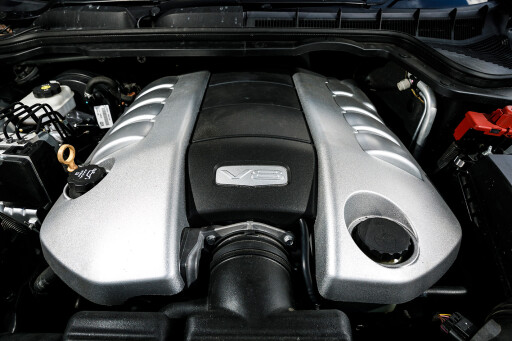 The front end worked to improve overall balance, taking pressure off the front tyres, the rear end therefore seemed a closer match and the whole thing was bigger and better in pretty much every direction. The VE steers with more clarity and belies its weighbridge ticket of 1600-plus kay-gees.
The front end worked to improve overall balance, taking pressure off the front tyres, the rear end therefore seemed a closer match and the whole thing was bigger and better in pretty much every direction. The VE steers with more clarity and belies its weighbridge ticket of 1600-plus kay-gees.
The LS2 cracks on harder and earlier than any LS1 and it’s not just the extra 300cc of displacement; the bigger motor is definitely bolder. And, suddenly, you weren’t a second-class citizen if you wanted an automatic gearbox; the six-speed auto became standard on the VE SS from day one.
The interior was a let-down with some iffy red graphics and poor plastic fit and finish and those A-pillars are still criticised for being thick enough to hide a B-Double. Which they are.
If you wanted more than the Omega underpinnings offered, of course, all you had to do was opt for the SS-V package which upped the ante to include 19-inch alloys and a larger, colour screen in the centre-stack. Either way you still got 270kW and the sort of performance that very few family cars could get near.
And the world was taking notice, too, with Holden exporting the VE to the Middle East, South Africa, Brazil and, of course, in a coals-to-Newcastle move, to the US where it was rebadged as the Pontiac G8.
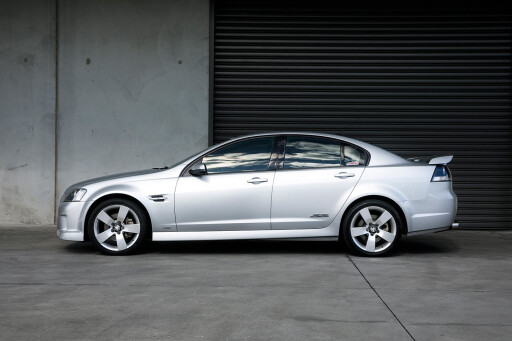 These days, the VE has been overshadowed a little by the VF, which is not only newer, it’s the last of the breed and can be had with the 6.2-litre V8. But trust us, the VE will rise again as buyers realise just how good it was and what an important car it was for Holden.
These days, the VE has been overshadowed a little by the VF, which is not only newer, it’s the last of the breed and can be had with the 6.2-litre V8. But trust us, the VE will rise again as buyers realise just how good it was and what an important car it was for Holden.
And what stunning value it was, and is. No discussion of hot Holdenry would ever be complete without a nod to the mighty Commodore Ute. Yes, the Ute was a mainstay of dealerships long before the Commodore took hold, but these later tray-backs are the closest things to a two-seat, long-boot sports car.
Given the buyer profile, it’s no surprise that Holden has always offered the hay-hauler with a V8 engine and the first Commodore Ute was the VG, launched in 1990 and immediately adopting the injected 5.0-litre.
As did the rest of the Commodore dynasty, it progressed through to the VS of 1995, but when Holden shifted sedan production to the new VT in 1997, the engineering work on the Ute hadn’t been completed. So Holden just kept cranking out the VS ute right up to 2000 when the VU (VX-based) Ute was ready to roll off the production line.
In that later guise, it had the roller-cam, sequentially injected 5.0-litre and was quite a thing with its lightweight body and optional limited-slip diff. When the VU lobbed, it was straight into the LS1 bin for an engine and a much bigger, smoother looking body that reminded you, from some angles, of the US-market Chev El Camino pick-ups.
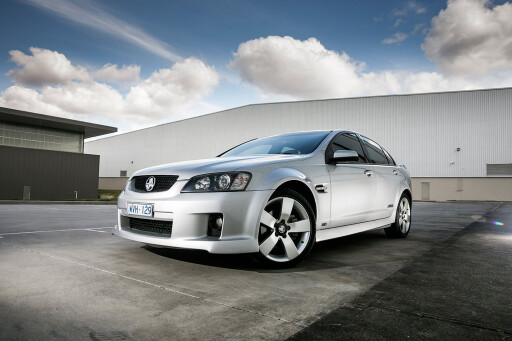 The body was changed again for the VE Commodore introduction and it also picked up the 6.2-litre engine in its final VF Series II guise. Ah yes, that 6.2-litre V8. Well, step right up; come see the last of the big bangers. It stings every time I think that the VF Commodore Motorsport Edition will be the last of this celebrated line.
The body was changed again for the VE Commodore introduction and it also picked up the 6.2-litre engine in its final VF Series II guise. Ah yes, that 6.2-litre V8. Well, step right up; come see the last of the big bangers. It stings every time I think that the VF Commodore Motorsport Edition will be the last of this celebrated line.
For the loss factor, obviously, but also because the Motorsport shows what might have been had we stuck with things. Lost opportunity sometimes seems worse than lost reality, somehow. Holden only built 1200 Motorsport Editions, but despite that, this was no token effort.
Nope, the old girl was going out with a bang and full props to Holden for ensuring that was the case. So, it started with a Commodore SS-V Redline, itself no bag-o-bolts, and added a range of stuff starting with the Magnetic Ride Control dampers that took the handling to a new level at this price point.
Set to Tour mode, the damping recreates (more or less) the FE2 suspension tune, while switching to Sport gets you FE3-spec damping. Go for the Track setting and it’s stiffer again.
As well as all the other SS-V Redline bits, including the big Brembo calipers, the Motorsport got a set of two-piece, cross-drilled front rotors (aluminium top-hats) that reduced unsprung weight. Holden also dipped into the GM Stateside parts bin and borrowed the driveline cooling package from the 650-horsepower ZL1 Corvette.
 The deal amounts to external coolers for the engine and tranny and takes the Motorsport Edition to Level 3 track-readiness (in GM-speak). Other bits and bobs included specific 20-inch wheels, heated front chairs, a black roof and paddle-shifters if you ordered her in automatic form.
The deal amounts to external coolers for the engine and tranny and takes the Motorsport Edition to Level 3 track-readiness (in GM-speak). Other bits and bobs included specific 20-inch wheels, heated front chairs, a black roof and paddle-shifters if you ordered her in automatic form.
We wouldn’t have, though. It still feels like a VF Series II Redline when you first jump in and start rattling off laps, but start to use what the Motorsport has to offer and you’ll soon discover a great depth or ability and character.
That starts with the adaptive dampers, of course, but soon extends to the braking hardware once you’ve leaned on them a couple of times in quick succession and discovered that they don’t even look like fading or extending your stopping distance.
If ever there was a Holden Commodore that made you stop and wonder if you really needed an HSV, this one is it. And that really is a great compliment. Meanwhile, you still get that wonderfully responsive, talkative VF front end that feels lively without being flighty and reminds you that even in an age of electric steering assistance, a big car can still be on its toes.
And the noise. Lord, the noise. Even in its most basic SS guise, the VF Series II has a yodel all its own and, while we’re making blanket statements, I think it’s the best sounding factory Holden ever. And I’m certainly not alone with that thought.
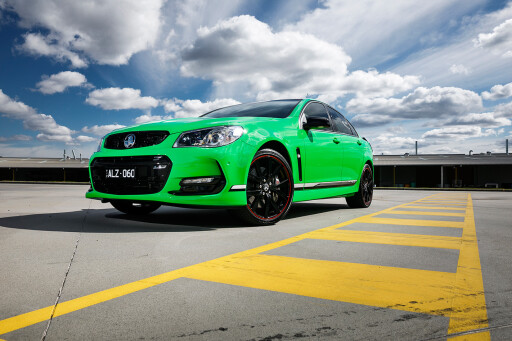 Of course, if the Motorsport Edition was a bit, er, flamboyant for you, there was always the Director, which was Calais-V based and auto-only. And then there’s the Magnum Ute, which played the evocative-name-game card one more time, but delivered a track-day-ready ute and the best tray-back Holden (and perhaps anybody else) has ever built.
Of course, if the Motorsport Edition was a bit, er, flamboyant for you, there was always the Director, which was Calais-V based and auto-only. And then there’s the Magnum Ute, which played the evocative-name-game card one more time, but delivered a track-day-ready ute and the best tray-back Holden (and perhaps anybody else) has ever built.
There are countries where it is a jailable offense to mock the president; where beer is not allowed; where locals wouldn’t know a high-performance family sedan if it ran over them. Fortunately, and thanks to cars like the Commodore (and endlessly mockable pollies) Australia has no such problem.
Until now, anyway, and the demise of the local car-making industry should serve as a reminder of a couple of things. First, that we had it good, real good, for a long time. And secondly, that we need to hang on to these cars and look after them so that they’re around for future generations of tappet-heads to admire.
I already struggle when the kids who run this magazine ask me “Who was Debbie Harry?”, but I’ll be even sadder when the first nipper asks me “What was a Holden Commodore?”.
Because then I’ll know that one more little strand of that fabric we know as society will have frayed, snapped off and blown away in the breeze. I blame politicians. I blame globalisation. But I can’t bring myself to blame Ted Bullpitt.

COMMENTS